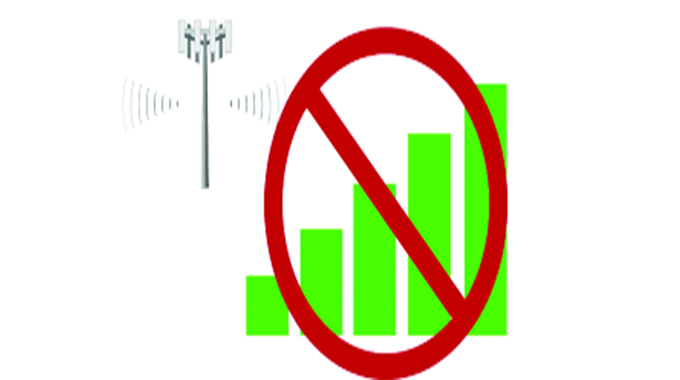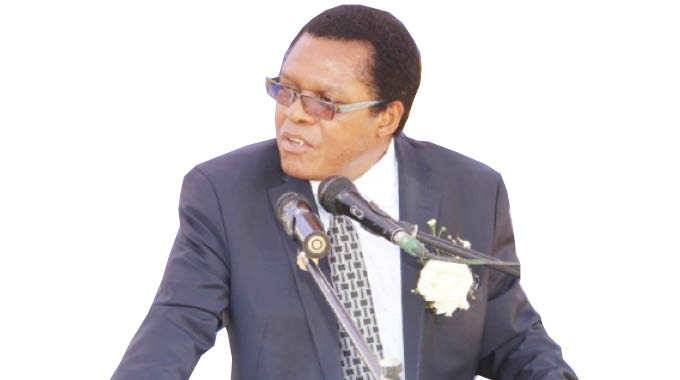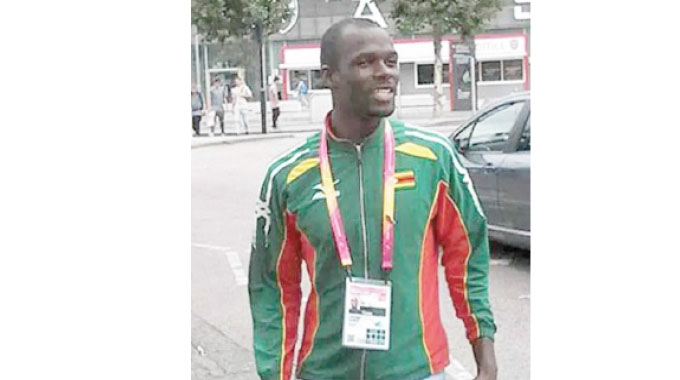Apply gender lens to technology in order to bridge digital divide

Gibson Mhaka
AMONG her daily household chores like fetching firewood, cooking, washing and even helping on the family farm, Ms Mary Munsaka (41) from Luunga Ward in Binga District, Matabeleland North province, is forced to walk long distances to get mobile phone network connection, which is mostly accessible on mountain tops.
Ms Munsaka is unquestionably missing out on most opportunities brought about by access to mobile phone networks.
“We’re facing a critical challenge in terms of communication. There’s poor coverage in most parts of Binga for almost all mobile phone networks and one has to walk for long distances to reach a few or isolated mobile hotspots. The situation is affecting our lives and just imagine a person having to get to a mountain to make a phone call, it’s a nightmare,” protested Ms Munsaka.
Like many rural women, who are key agents to achieving the transformational economic, environmental and social changes required for sustainable development, Ms Munsaka is a typical example of women that struggle with the challenges of living in remote areas, as they are lagging behind in terms of access to Information Communication Technologies (ICTs).
Ms Munsaka is also just one among millions of women, particularly young rural women in developing countries like Zimbabwe and other countries in the Southern African Development Community (Sadc) region, that are being left behind as the global workforce increasingly uses digital tools and other technologies.
According to a recent report by the International Telecommunication Union (ITU), globally, the Internet gender gap is about 25 percent in developing countries overall, but higher in sub-Saharan Africa where it accounts for more than 40 percent. The report further says women are 23 percent less likely than men to own a mobile phone in Africa.
In 2016, Internet access was declared a basic human right by the United Nations, which also cited gender equality and women’s empowerment and innovation as driving forces to reach the 2030 objectives.
Rural women are the least connected to ICTs, access to internet and other digital technologies, one of the challenges being faced by girls and women, particularly in developing countries, and this affects their digital human rights, as set out in the African Declaration on Internet Rights and Freedoms (African Declaration).
This technology-centered problem is no doubt adding to other gender inequalities already affecting developing countries and has been exacerbated and brought into sharp focus by the coronavirus pandemic.
Musasa Project gender advocacy and communications officer Mrs Rotina Mafume-Musara said the Covid-19 pandemic demonstrated the importance of internet access technologies and innovation in efforts to achieve gender equality, especially in developing countries.
“During this period of the Covid-19 pandemic, harnessing the potential of new types of economic activity, innovative and improved health care service delivery became critical for women and girls. This is the time when women’s groups and development partners need to harness ICTs as a tool for gender advocacy, participation and effective networking opportunities for women.
“For developing countries to close the gender divide in ICTs, they need to ensure that adequate resources are available for women and girls, especially for those in rural communities,” said Mrs Mafume-Musara.
“Gender response programmes need to address issues of access to ICTs and literacy efforts in the use of ICTs. More so, a deliberate action plan towards women’s participation in ICTs should include subsidised and low-cost public Internet, especially in rural areas.”
According to Plan International, a development and humanitarian organisation that advances children’s rights and equality for girls, women and girls in developing countries often have less access to technology and Internet compared to boys and men.
Women and child rights activist Ms Sandra Muzama said while there was recognition of the potential of ICTs as a tool for the promotion of gender equality and empowerment of women, barriers contributing to the gap on the continent include unaffordable gadgets and data and low digital literacy among girls and women.
“Our policies in ICTs do not explicitly encourage the inclusion of women and girls, hence the widened digital gap, especially in the wake of Covid-19, when most spaces have been shifted to being virtual. Moreover, the future of work is digital, which means that women and girls will remain disproportionately marginalised and are at risk of being excluded on digital spaces for development,” said Ms Muzama.
She said techno-literacy was caused by widespread belief that technology skills are more apt for men, hence women are generally underrepresented in ICT jobs or hold lower strata jobs in the sector.
The latest Afrobarometer survey shows that African women trail behind men in access to digital information and communications technologies, and the gap may be widening, as women are less likely than men to own a computer or a mobile phone with access to the Internet.
The survey also highlighted that although women’s Internet use has doubled over the past five years, the gender gap in regular Internet use has also increased.
Women Space Trust director Ms Audrey Charamba said there was a well-acknowledged gender gap concerning technological access and literacy, which flows from the larger ‘digital divide’ among and within developing countries, in which networks and information and communications technologies were unequally distributed among people for reasons of cost, quality, and availability, among other factors.
“Since technology and innovation are powerful tools for girls to become activists and lead change on issues that affect them, it is everyone’s responsibility to ensure that instead of being barriers, technology and the internet become enablers for girls and women. Online abuse is also another reason driving women and girls to quit ICT facilitated platforms such as Facebook, Instagram and Twitter,” said Ms Charamba.
It should be succinctly stated that in order to achieve the ambitious Sustainable Development Goals (SDGs) and notably the goal on gender equality and women’s empowerment, girls and young women need equal access to technology, digital training and safety online.
Based on current gender trajectories, existing efforts will not suffice to achieve a Planet 50-50 by 2030.
Co-founder and team leader for Fathers Against Abuse (FAA) Mr Alois Nyamazana, while acknowledging the problem of gender in relation to ICTs, said religion was one of the major barriers creating and sustaining the gender gap in innovation and technology.
“Religion is one of the barriers that women generally face in their access and usage of innovation and technology.
Some religious practices prohibit women from participating on these platforms and in the end, women find themselves confined to the private sphere.
“As a men’s organisation, we are, however, engaging other men through dialogues and education awareness campaigns so that they change their perceptions on issues around gender equality. We want them to understand that gender equality requires equal enjoyment by both women and men whether in the family, the workplace or the public sphere since it is vital to the realisation of human rights for all, including equal access to technology and innovation,” said Mr Nyamazana.
Studies have shown that under the SDGs, African states have made commitments to close the gender digital divide, but these efforts have not yet led to the desired success.
Information Technology (IT) expert Mr Joel Tsvakwi said there was need to challenge and transform the gender norms and stereotypes that impede gender equality and perpetuate discrimination and gender-based violence within technology-related fields of education, places of work and daily life.
“In developing countries like Zimbabwe and others in the Sadc region, there should be robust investment in ICT infrastructure as a way of bridging the existing gender gaps. To make these technologies gender neutral, gender equality advocates need to also storm the ICT arena in untiring ways we have seen them engage in before.
“When it comes to girls and women in rural areas, they can be supported by setting up Community Information Centres (CICs), which are one-stop information hubs connected to the Internet and equipped with digital content,” said Mr Tsvakwi.
It is clear from Mr Tsvakwi’s observation that achieving gender equality within and through technology and innovation must not be equated to a simple increase in numbers or parity alone.
Rather, it is about breaking down the barriers, both structural and interpersonal, that exclude or discourage women and other gender diverse people from developing skills, studying, or working in this field, and that also enable online Gender-Based-Violence (GBV) to occur with relative impunity.








Comments